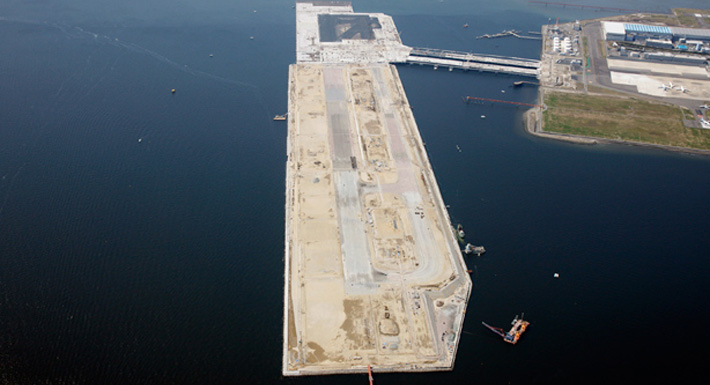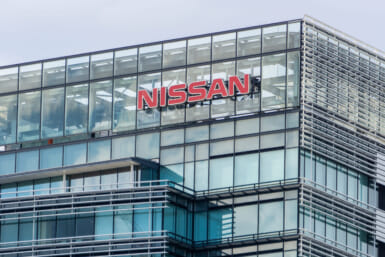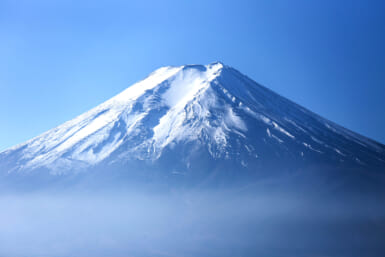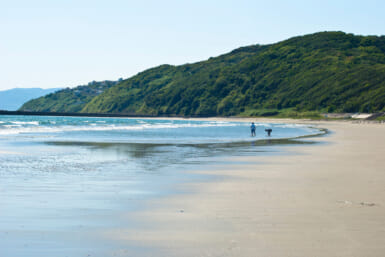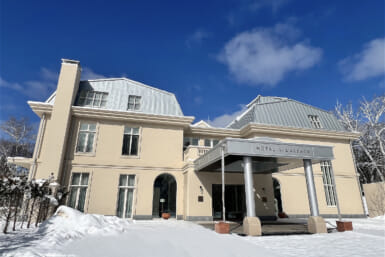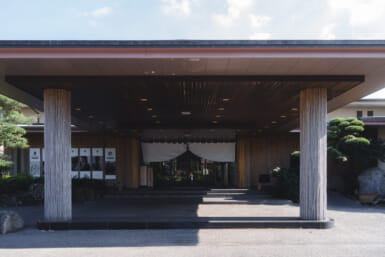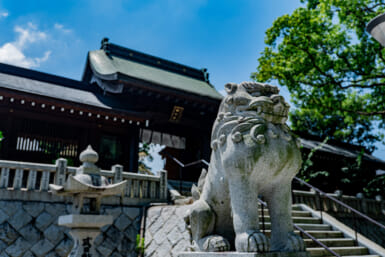At115-meters, the new control tower at Haneda is one of the tallest in the world. The compact airport it watches over is Japan’s busiest and is set to get busier still.
This October will see the opening of runway D, a new, fourth runway alongside a new five-floor terminal building and train station, offering travelers in Tokyo improved service and much greater choice.
Transport Minister Seiji Maehara sees Haneda as a new hub that could be key in the economic revival of the city. Currently Haneda offers domestic flights and limited international service to cities in South Korea and China.
Following the expansion, regular flights will also connect the Tokyo airport with Taiwan and Hong Kong during the daytime, and with Southeast Asia, the United States, Canada and European cities in the early morning and late evening.
“There is no hub airport in Japan currently,” Said. “With Narita serving international [flights] and Haneda domestic, South Korea’s Incheon airport has become the hub airport for Japan.” This kind of competition from South Korea, Singapore and China has forced Tokyo to rethink transport options to stay competitive in the global economy. South Korea’s Incheon airport has three runways for international arrivals and departures and has overtaken Narita (Tokyo’s main international airport) in terms of the number of planes and volume of cargo handled. Korean airlines now operate services to 27 Japanese cities.
“By removing the principle of keeping apart domestic and international [services], we would like to gradually aim at turning Haneda into an international airport that can operate on a 24-hour [basis].” Maehara said.
Big-name carriers are awaiting news on the allocation of slots once the new runway and terminal open this fall. British Airways is hoping to operate a new route starting in 2011. “A Haneda–London Heathrow route would absolutely be beneficial for customers, particularly business travellers who are pressed for time,” said Kevin McQuillan, BA regional general manager for East Asia. “As BA currently operates only one flight per day between Narita and London Heathrow, the addition of flights to and from Haneda would provide further choice for customers, as well as greater connection opportunities from both Tokyo and London.”
Cathay Pacific plans to operate two daily services between Haneda and Hong Kong. “Expansion at Haneda will improve international competitiveness of both Hong Kong and Japan,” a spokesperson for the airline said. “This is a good opportunity for expansion of international scheduled services in Tokyo, which are highly sought after by all countries and territories with airlines flying to Tokyo.”
ANA and JAL are locked in a heated competition for coveted international slots at Haneda, with ANA even trying to claim all four new U.S. slots, leaving none for JAL. But JAL isn’t giving up so easily, having recently announced plans for greater cooperation with its partners in the Oneworld alliance. ANA complained that it “would distort the competitive environment” if bankrupt JAL, now undergoing rehabilitation with state support, is allowed to open new routes. On June 24 ANA announced that inaugural flights will start on October 31, connecting Haneda Airport with Los Angeles, Honolulu, Singapore, Bangkok, and Taipei. “We have long been waiting to operate international scheduled flights from Haneda Airport and we are extremely pleased with the news. We would like to express our gratitude to all those who have worked hard towards the internationalization of Haneda,” said Shinichiro Ito, president and CEO of ANA.
“ANA is going to use Narita and Haneda as a ‘dual-hub,’ like that of Frankfurt and Munich in Germany.”
Tokyo’s International Airport
The history of Haneda airport is a long and storied one. It first opened its doors on August 25, 1931 as the first civil aviation airport in Japan, with a runway just 150 meters in length. After World War II the numerous families who lived on the island were ejected and the area was used by the US military as Haneda Air Base. During the Korean conflict, it was used to ferry personnel to and from Korea. In the 1950s it was returned to Japanese control and began to welcome tourist flights from Europe with de Havilland Comet flights from London, Copenhagen, and later Moscow.
The Japanese government officially renamed the airport Tokyo International Airport in 1952, and a large-scale development followed with two full-size runways being constructed. The next decade brought some radical changes, including the construction of a third runway that could accommodate new, larger jet aircraft. It was built running parallel to the first on the already cramped island. The Tokyo Olympics and the creation of the Tokyo Monorail boosted access from the city to the airport, but demand eventually outstripped supply and the small land area in Tokyo bay was no longer viable for global flights. Haneda’s basic facilities were rapidly going out of date.
The 1970s would bring huge problems for Tokyo, with continuing and growing jet noise and steadily increasing cargo and passenger numbers. The Ministry of Land, Infrastructure, Transport and Travel weighed possible solutions, finally deciding to seek out flat land to construct a new airport with modern facilities. Space in Tokyo was scarce, so farmland to the east in Chiba was deemed the best—and only—option. Almost all international flights were transferred 70km away to the sleepy rice fields of Narita, in Chiba Prefecture.
Narita’s ‘New Tokyo International Airport’ opened in 1978, but not after delays caused by vicious opposition to the scheme. Displaced local farmers, landowners and radical left-wing groups mounted a protest campaign against construction, even creating an organized union to oppose the new airport. Riots were so bad that three police officers were killed, and to this day Narita’s airport is surrounded by police watchtowers and extra high fences to deter protesters.
“Approximately 180,000 jobs will be created in direct connection with the construction of the airport.”
Narita and Haneda Partnership
Narita and Haneda airports, often seen as rivals, are actually set to work in partnership with each other. Maehara is aiming to unite the management of the airports in a central location in the metropolitan area. A spokesperson for ANA said, “We are going to use Narita and Haneda as a ‘dual-hub,’ like that of Frankfurt and Munich in Germany. Haneda will mainly catch business demand in the local Tokyo area, and Narita will stay as a hub to cover connections of international flights, such as passengers from the USA and Europe connecting to [cities in] Asia.”
Travel to Narita Airport is set to improve this year, too, as the new Keisei Skyliner train will cut travel time to 36 minutes from Ueno station, with trains running at 160 kilometers an hour. The $1.3 billion rail expansion uses rights-of-way originally planned for the abandoned Tokyo–Narita shinkansen.
The two airports will operate in tandem, similar to systems in New York or London, where numerous airports offer flights throughout the day.
“The major differences between the two airports are access to and from the heart of the city and flight operation hours. Haneda Airport can operate flights for 24 hours, while flight operation at Narita Airport is between 11pm and 6am,” a representative of Cathay Pacific said.
At Haneda, building constraints due to a shortage of land held the airport back, but pressure to stay competitive with other Asian hubs has driven a new wave of innovation. Cutting-edge engineering techniques have been used to build a new runway superstructure in Tokyo bay. The new Haneda runway D will enable Tokyo’s closest airport to increase capacity from 297,000 to 407,000 take off and landing counts per year, approximately 300 more flights every day spread over four runways.
The dollar effect on Japan, and in particular Tokyo’s economy, is huge. Government estimates suggest the average annual production increase will be $20 billion, and the amount of tax revenue will increase by $2.3 billion. In addition to promoting tourism and business as a whole, approximately 180,000 jobs will be created in direct connection with the construction of the airport.
As the economy in Japan is facing a very difficult future, it is essential to finish the project as soon as possible. A joint venture was created between 15 major construction companies to do just that, with workers laboring day and night to finish the job. The deadline of October 2010 was set before work even began, and with this date looming large, all partners in the venture have committed to 24-hour work in order to complete construction on schedule.
Three methods of construction were proposed for runway D, each with differing problems and benefits. Eventually the construction companies decided upon a hybrid solution. A steel latticework would sit in the mouth of the Tama River, allowing maximum water flow into the bay, and an artificial island would be constructed, with bridges joining it to Haneda island. Undertaking such a large project right in the flight path of one of the world’s busiest airports is no simple feat. Huge floating cranes were needed, but they stand up to 130 meters above the water, so to keep the runways operational, even the lifting equipment had to be redesigned. A huge lifting crane built by Yoshida was reduced in height from 83 to 49 meters and reduced in weight. Groups of ships were also used to drive piles into the sand to create a solid foundation, with GPS systems utilized to ensure they stayed on track as they worked around the clock.
Haneda is now the world’s second busiest airport in terms of passengers per runway (after London’s Heathrow), handling over 65 million people per year. Access has been improved in an effort to ensure efficiency, with a new train station at the airport due to serve the Keikyu line and Monorail. To ease car traffic, parking has also been hugely increased. All this should hopefully mean that visitors to Tokyo will be welcomed to Japan by the country’s trademark efficiency and high level of service.
With improvements to the infrastructure at Haneda and the intention of opening greater links to Europe and across the Pacific in the future, hopes for the new airport are high. McQuillan of British Airways said,
“We are sure Haneda will be well placed to handle further flights.”
Globetrotting Financial Times columnist and editor-in-chief of Monocle magazine Tyler Brûlé is an outspoken supporter of Haneda, even going so far as to name the airport the world’s number one most efficient transport hub. On a recent visit to Tokyo, Brûlé shared his views on the expansion of Haneda: “It’s a huge opportunity for Japan right now. It gives it a chance to re-establish itself, but they have to exploit it; they have to market it.” This, as with most large projects in Japan, is where the real challenge lies, and only time will tell whether or not organizers are prepared to meet it.
Flights out of the new terminal at Haneda are due to start in October. For more details regarding airlines and flight schedules, check
www.tokyo-airport-bldg.co.jp/en
External Link:
ANA, Wikipedia

